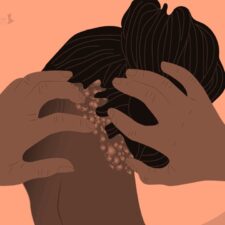
She may have been named Tionne Watkins at birth but the world only knows her as ‘T-Boz’. Since the 1990s, that stage name has marked her as the ‘T’ from the famous girl group, TLC. Though the group was tremendously successful, it eventually went on hiatus in 2007 - 5 years after the accidental death of one of its other members, Lisa ‘Left Eye’ Lopes. Despite that, though, Tionne continued to be active on the entertainment scene.
Apart from releasing solo music, she worked with other artists on their songs and had multiple acting roles. She also released a book of poetry called ‘Thoughts’ in November 1999.
While the focus has always been on her music, however, the public was always aware that she battled a chronic illness. Tionne was diagnosed with sickle cell disease when she was 7 years old and was hospitalized several times during her time with the group.
Over the years, Tionne has been open about her difficulties with the disease. For example, when she had her daughter, she slipped into a coma after breastfeeding.
Most recently, she shared with Future of Personal Health all the precautions she has to take when traveling to cities at high altitudes as well as how her self-care has changed.
RELATED: T-Boz & Her Secret Brain Tumor Battle
What Is Sickle Cell Anemia?
Sickle cell anemia is a chronic disease in which your red blood cells are malformed. These cells are sickle-shaped and cannot carry oxygen well. The illness also causes the cells to stick together so people with sickle cell anemia often have issues with blockages that can interfere with blood flow.
People dealing with sickle cell disease are likely to experience varying degrees of pain, swelling in their extremities, bouts of anemia, frequent infections, and vision problems. Of course, the severity of these symptoms will depend on the type of sickle cell disease you’re dealing with.
The characteristic anemia that comes with this disease can be attributed to how quickly the compromised red blood cells die. While regular blood cells get replaced every 120 days, sickled blood cells can die as soon as 10 days after being produced.

How It’s Diagnosed
Sickle cell anemia can be diagnosed as early as childhood because the symptoms can be fairly obvious in children. One major issue is that children with the illness can experience developmental delays. The presence of the disease can be confirmed with a blood test that looks for the sickle cell form of hemoglobin. Once diagnosed, your doctor may also request other tests for complications of the illness such as heart disease or kidney failure.
Additionally, you’ll likely do further blood tests to determine the type of sickle cell anemia you’re dealing with. The type will determine how severe your symptoms are likely to be and the kind of treatment you’ll need. Of the possible options, Hemoglobin SS disease is the most common type and has severe symptoms.
T-Boz at 50+: “Doctors Said I Wouldn’t Live Past My 30’s & Never Have Kids”
How Sickle Cell Anemia Is Treated
Sickle cell anemia is a chronic, hereditary illness and usually can’t be cured. However, your doctor will prescribe a program to manage the symptoms and prevent complications.
Medications such as hydroxyurea and Crizanlizumab are used to reduce the frequency of pain crises while Voxelotor Is meant to improve blood flow in the body.
In the event of a crisis, you may also be given painkillers. If you develop an infection, you’ll be given the necessary antibiotics and the doctor may recommend an appropriate vaccination schedule for certain illnesses.
People who have a severe form of sickle cell anemia typically need to have blood transfusions regularly. These transfusions are to replenish the sickled red blood cells that die quickly. So far, the only known cure for sickle cell anemia is a stem cell transplant. The procedure is only used as a last resort though because of its inherent risks.
Being diagnosed with sickle cell anemia can be a life-altering experience, but it can be managed. In T-Boz’s case, doctors told her she wouldn’t live past the age of 30 but she defied those odds by taking care of herself and implementing preventative self-care routines.








